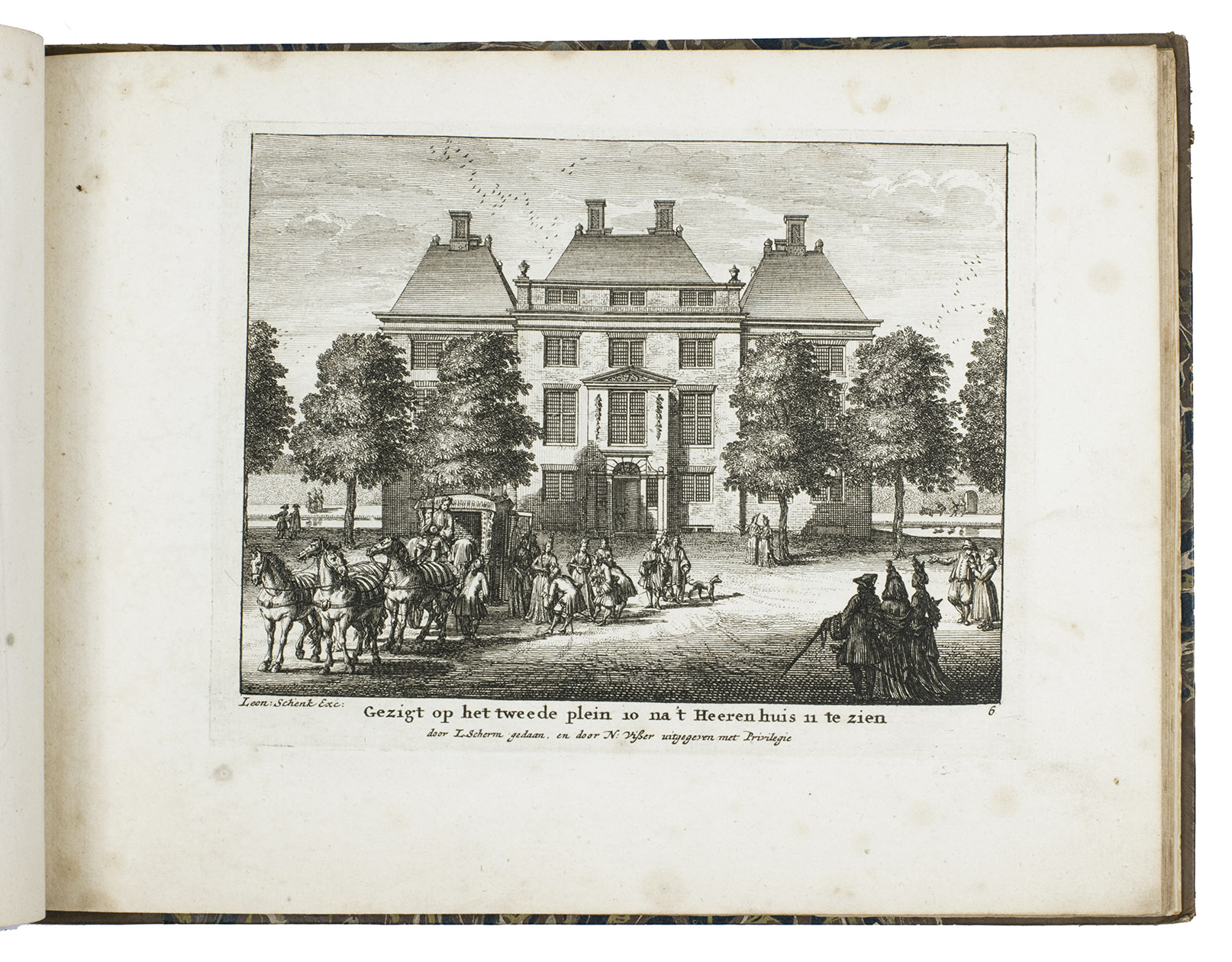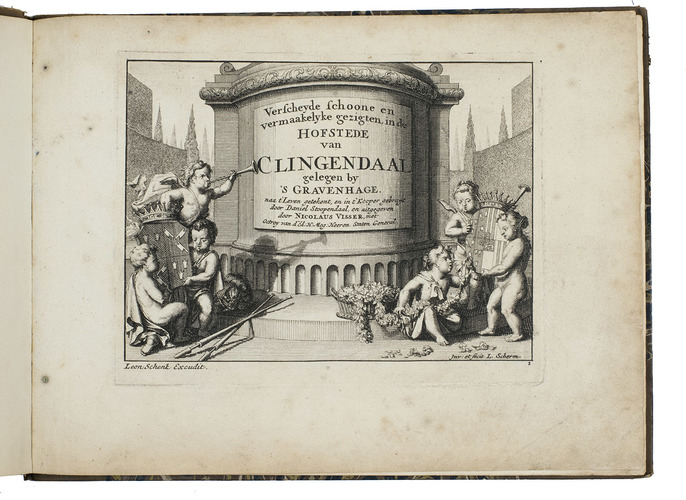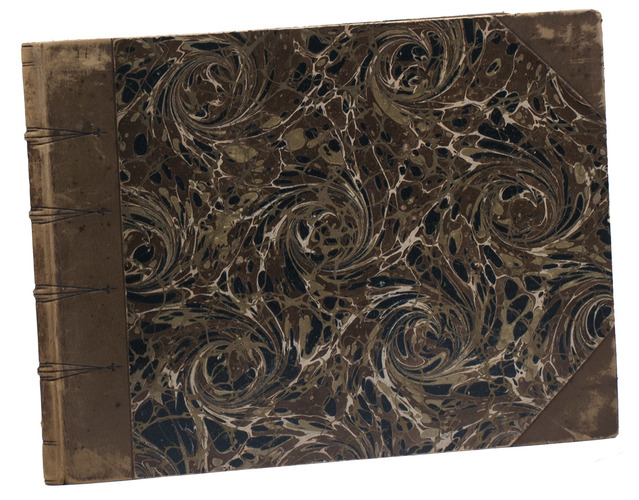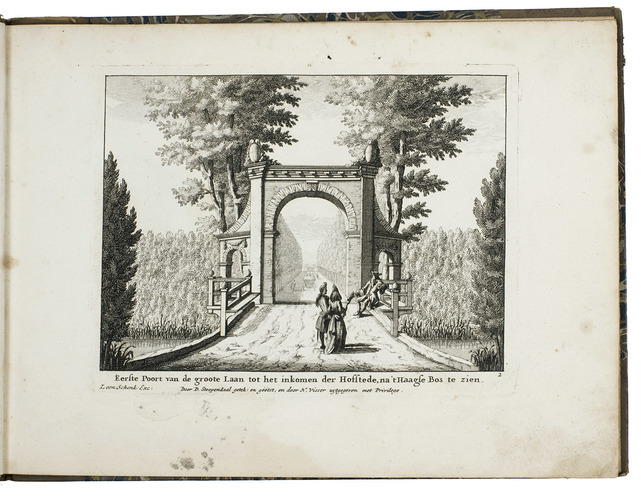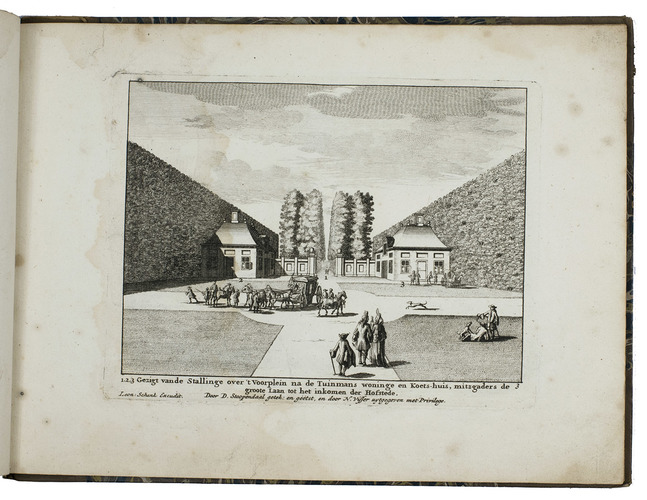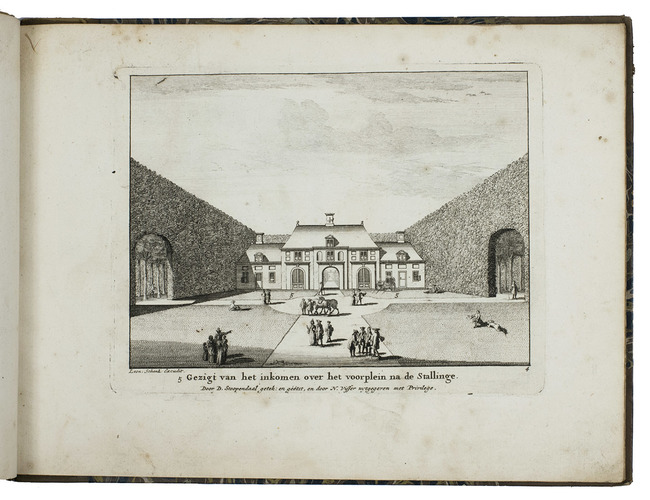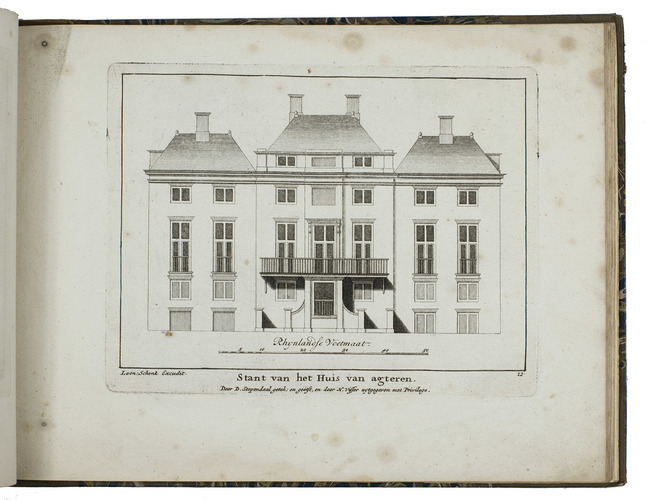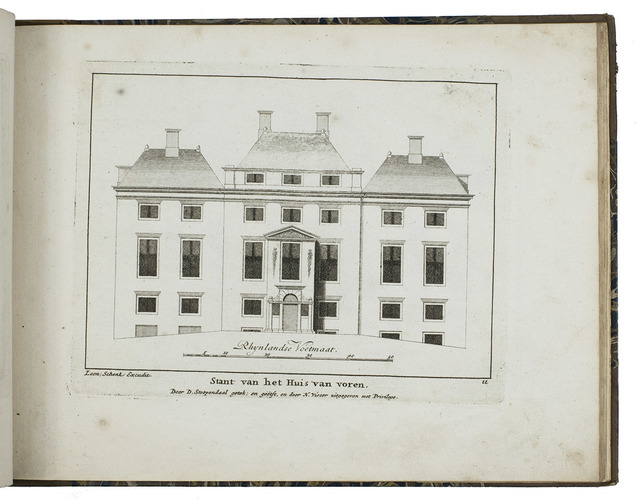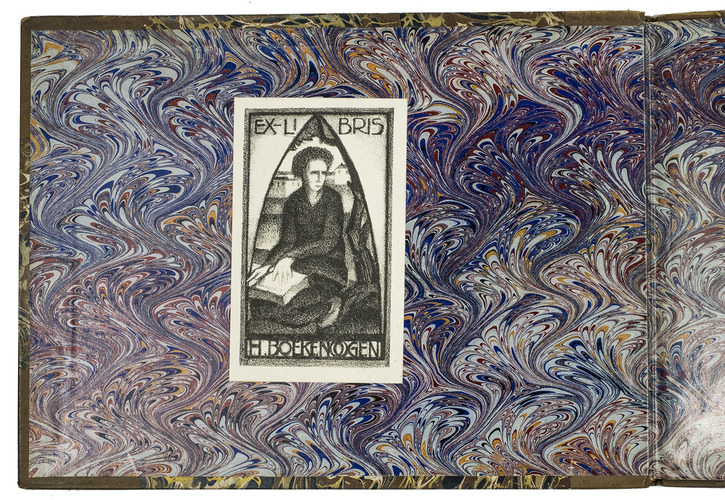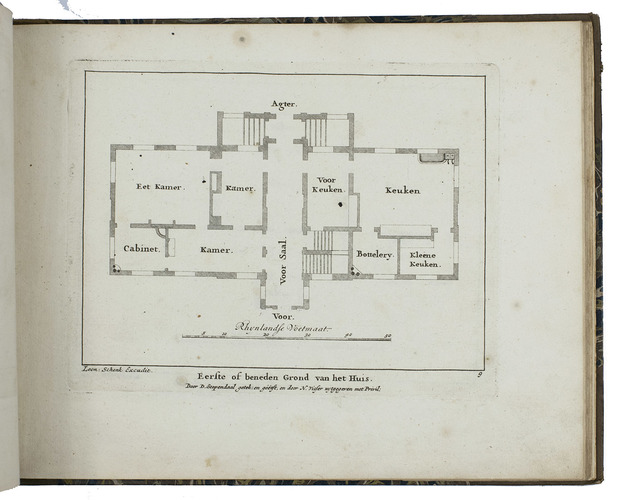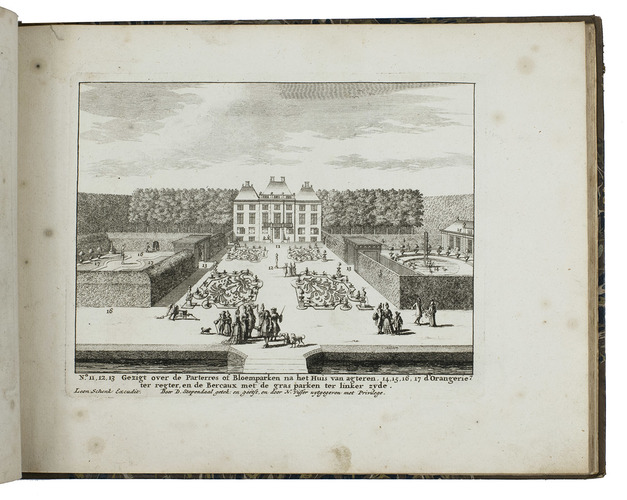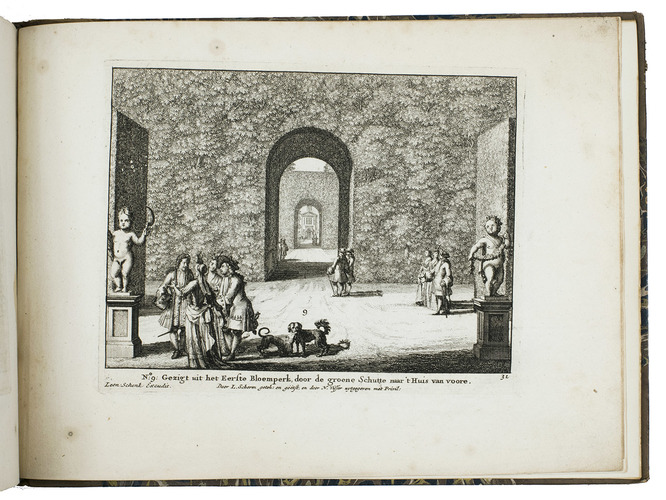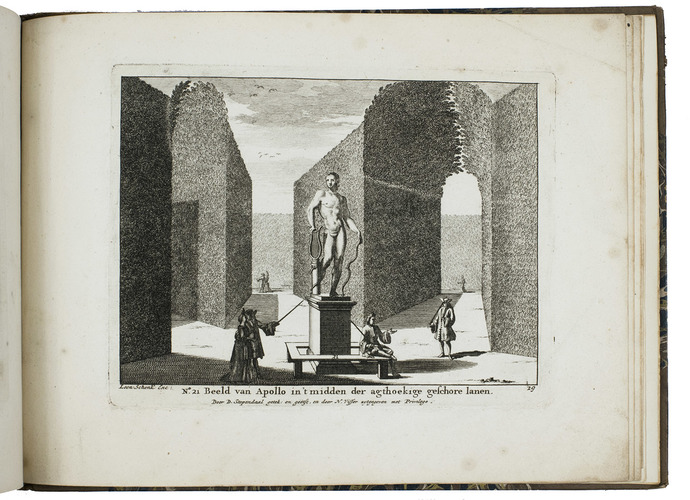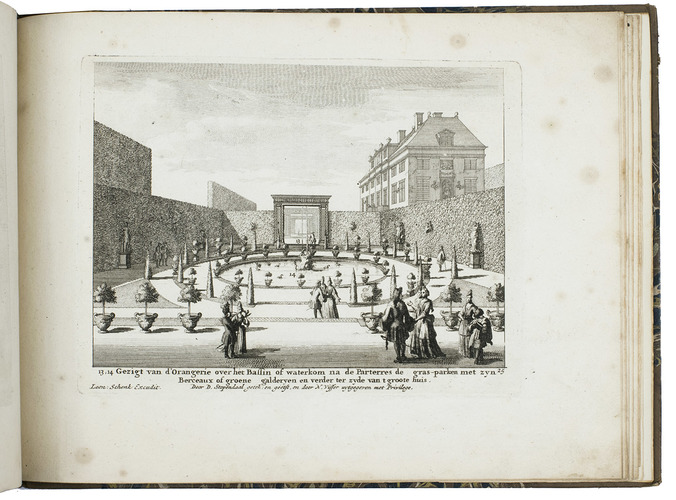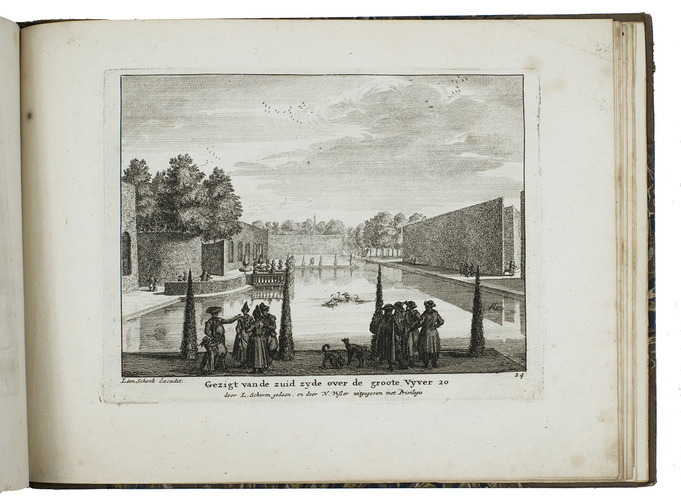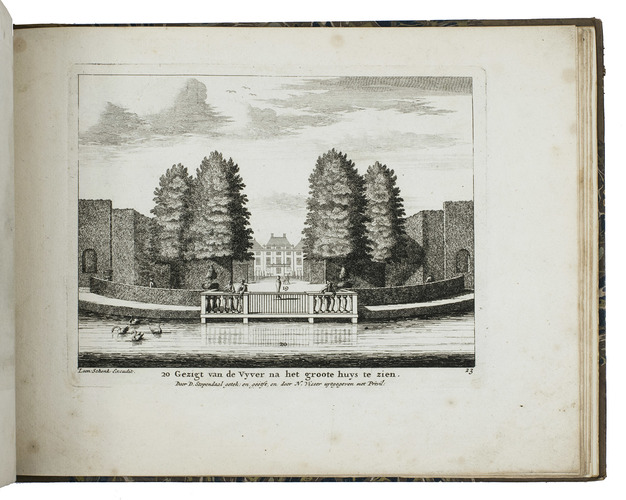STOOPENDAAL, Daniel and Laurens SCHERM.
Verscheyde schoone en vermaakelyke gezigten, in de Hofstede van Clingendaal gelegen by 's Gravenhage.
[Amsterdam], Nicolaas Visscher, [ca. 1697/1701]. Small oblong folio (18 x 24 cm). With 32 numbered engraved prints (13 x 16.5 cm), including the title-page, captioned in Dutch, with views of the country house and gardens of Clingendaal near The Hague, designed and etched and engraved by Daniel Stoopendaal, Laurens Scherm and Leon Schenk. Blind- or black-tooled half calf (ca. 1900), marbled paper sides and endpapers. [32] engraved ll.
€ 2,950
A series of 32 prints, including the engraved title-page, by the etcher, engraver and draughtsman Daniel Stoopendaal (1672-1726) and etcher Laurens Scherm (fl. 1689-1701) in their second issue, executed by Leon Schenk and edited and published by Nicolaas Visscher: beautiful views of one of the most prestigeous country houses and gardens of the Dutch Republic, Clingendaal near The Hague, including prints showing the construction of the house and plans of both the house and gardens.
The garden of the Clingendaal estate occupies a unique position in the development of garden art in the Netherlands, of crucial importance for the understanding of the development of French-inspired formal gardens at the time of Stadtholder Willem III (1650-1702), from 1689 King William III of England, Ireland and Scotland.
Clingendaal was in possession of the wealthy and influencial Doublet family from 1591 to 1727. Philips Doublet II (1633-1707), inspired by the new French classical style and the gardens of Hofwijk - the country house of his father-in-law Constantijn Huygens, secretary to the Stadtholder/King William III - started the constructiion of the gardens as early as the 1670's and completed it in the early 1680's, establishing one of the first "French gardens" in Holland. Doublet's estate played a central role in the introduction and dissemination of French stylistic forms in Holland, which would culminate in garden layouts at Het Loo, De Voorst, Heemstede and Zeist. Philips Doublet, a real "gentleman-virtuoso" and dilettante architect, had married Susanna Huygens, the daughter of the famous scholar and humanist Constantijn Huygens. Doublet was a personal friend of Willem III, with whom he discussed matters concerning art and architecture.
With the bookplate of H. Boekenoogen on the front paste-down, an owners inscription in black ink "Jorn Copijn 1977" and a small bookbinder's label of " D.G. van Bommel Amsterdam" on the second free endleaf. Lacking print 33 by L. Scherm: an obilisque ina maze of tall hedges (Hollstein XXIV, Scherm 30). The binding shows some signs of wear around the corners and the spine, internally slightly soiled, but overall a good copy with wide margins. The Anglo-Dutch garden in the age of William and Mary (1988), pp. 179-183; Hollstein XXIV, Scherm, 24-29 & 31-32 (= nos. 1, 6, 16, 19-20, 24, 31-32); Hollstein XXVIII, Stoopendaal, 18-41 (= nos. 2-5, 7-15, 17-18, 21-23, 25-30); Springer p. 45; STCN (4 copies).
Related Subjects:
